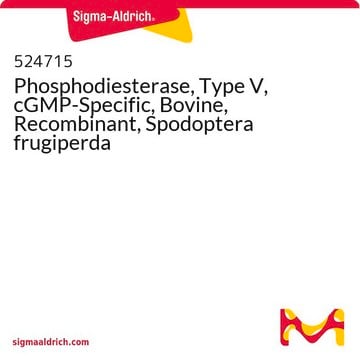G7504
Guanosine 3′,5′-cyclic monophosphate
≥98% (HPLC), powder, intracellular mediator
Synonym(s):
cGMP, cyclic GMP
About This Item
Recommended Products
product name
Guanosine 3′,5′-cyclic monophosphate, ≥98% (HPLC), powder
Assay
≥98% (HPLC)
form
powder
color
white
solubility
0.2 M NaHCO3: 50 mg/mL
storage temp.
−20°C
SMILES string
NC1=NC(=O)c2ncn(C3OC4COP(O)(=O)OC4C3O)c2N1
InChI
1S/C10H12N5O7P/c11-10-13-7-4(8(17)14-10)12-2-15(7)9-5(16)6-3(21-9)1-20-23(18,19)22-6/h2-3,5-6,9,16H,1H2,(H,18,19)(H3,11,13,14,17)
InChI key
ZOOGRGPOEVQQDX-UHFFFAOYSA-N
Related Categories
Biochem/physiol Actions
Features and Benefits
Signal Word
Warning
Hazard Statements
Precautionary Statements
Hazard Classifications
Eye Irrit. 2 - Skin Irrit. 2 - STOT SE 3
Target Organs
Respiratory system
Storage Class Code
11 - Combustible Solids
WGK
WGK 3
Personal Protective Equipment
Certificates of Analysis (COA)
Search for Certificates of Analysis (COA) by entering the products Lot/Batch Number. Lot and Batch Numbers can be found on a product’s label following the words ‘Lot’ or ‘Batch’.
Already Own This Product?
Find documentation for the products that you have recently purchased in the Document Library.
Customers Also Viewed
Articles
Cyclic nucleotides like cAMP modulate cell function via PKA activation and ion channels.
Cyclic nucleotides like cAMP modulate cell function via PKA activation and ion channels.
Cyclic nucleotides like cAMP modulate cell function via PKA activation and ion channels.
Cyclic nucleotides like cAMP modulate cell function via PKA activation and ion channels.
Our team of scientists has experience in all areas of research including Life Science, Material Science, Chemical Synthesis, Chromatography, Analytical and many others.
Contact Technical Service













